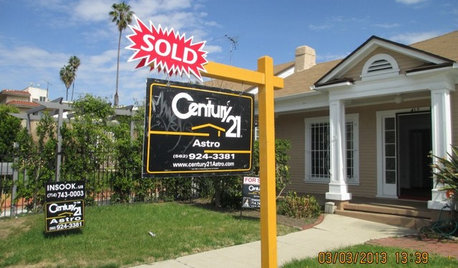Here is a basic primer to begin your Association education. After all, you must learn your ABCs before you can read and write.
A is for "the Act." Not related to procreation or too much champagne, we are referring to the Illinois Condominium Property Act. The word "the" is essential since there is no Act for homeowner associations.
B is for balconies (and patios) which are limited common elements.
C is for common elements. Everything but the unit. Simple in its inception, it became more complicated by the adoption of such concepts as limited common elements and even exclusive limited common elements.
D is for director. The elected representative who sits on the board to administer and maintain the common elements. Often viewed as a policeman, complaint department, janitor and punching bag.
E is for easement. The right to enter onto someone elses property. Also used for tearing up sod and shrubs to lay cable. Restoration is optional.
F is for fines. How you get owners to follow the rules. Requires notice and due process through a hearing. Collecting them is another story.
G is for garage. The place to park an automobile, which may be deeded with the unit. Garages with unassigned parking often get assigned through magical powers assumed by a board.
H is for homeowners association. Not a condominium. Single-family attached or detached housing with individually owned lots governed by a set of covenants and bylaws.
I is for injunction. What you need to compel compliance with the rules. To enter a unit or remove a vehicle from someoneÂs driveway in a non-emergency situation requires a court order.
J is for judgment. A court order. In foreclosure actions against delinquent owners, the score at the end of the game reads Lender 1,000/Association 0.
K is for kids. The junior occupants of a unit. Often placed third on the emotional scale of a rule violator; after their car and their pets.
L is for limited common elements. Those portions of the common elements that are within the exclusive use and abuse of a unit. A good place to put a satellite dish under current FCC guidelines.
M is for manager. An underpaid, overworked professional. Managers come in all shapes and sizes. All levels of skills and experience. Also see, qualified professional or grocery clerk.
N is for no-leasing amendment. A very popular attempt to make a property solely resident-owner occupied. Requires a super majority of owners to adopt "I hereby declare this property free of renters."
O is for original documents. The declaration and bylaws which usually become obsolete several years after the association is created.
P is for pool (as in swimming). A large hole in the ground you shovel money into. Also, see "white elephant."
Q is for quit. As is the case with 10 to 50 percent of the board every year for various reasons. Replacement directors often difficult to locate.
R is for reserves. A specific sum of money of which there is never enough. The Act allows an association to vote to opt out of collecting reserves. These associations never have a sense of deprivation.
S is for snow. A million tons of white, solid precipitation falling on association streets and walks. Frequently follows a large special assessment for essential maintenance projects.
T is for trustee. Another name for the developer often hiding behind a bank. Not to be confused with the person designated to vote when a unit is held by a trust.
U is for unit. A ceiling, four walls and a floor enclosing air space suitable for living. Contents and improvements are not covered by insurance.
V is for voting member. The person who gets to vote in an association election. Cannot be a husband and a wife unless they own more than one unit. Living together is optional.
W is for warranty. What the builder gives you when you buy your condominium. Often written in disappearing ink.
X is for the mark you put in the box on a ballot in an election, unless there is cumulative voting. When you "cumulate" votes, you get one for each candidate. Not to be confused with a "T" which is expressly prohibited.
Y is for yearly (annual) budget. (I had to find a "y" somewhere!). Must be sent out to owners prior to BOARD adoption. (Note - emphasis on the word "board")
Z is what you might see in a set of board meeting minutes when a meeting lasts three hours. Such as z - z - z - z - z.
As you can see, by learning your ABCs you can become a knowledgeable and informed condominium owner
















diydanaOriginal Author
talley_sue_nyc
Related Professionals
Ogden Interior Designers & Decorators · Struthers Interior Designers & Decorators · Sweetwater Interior Designers & Decorators · Wanaque Interior Designers & Decorators · Westminster Architects & Building Designers · Casas Adobes General Contractors · Midlothian General Contractors · Norman General Contractors · Rock Island General Contractors · Seabrook General Contractors · Toledo General Contractors · Winton General Contractors · Toms River Kitchen & Bathroom Remodelers · Warren Kitchen & Bathroom Remodelers · Westchester Kitchen & Bathroom RemodelersdiydanaOriginal Author